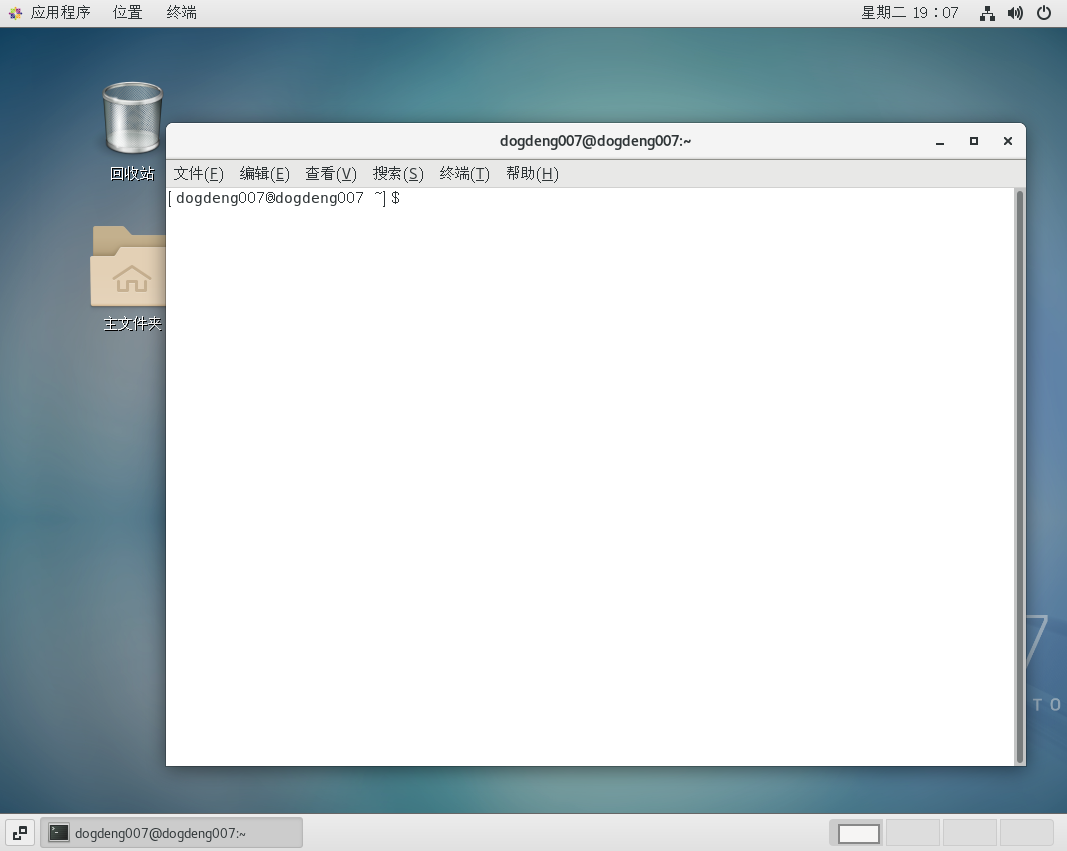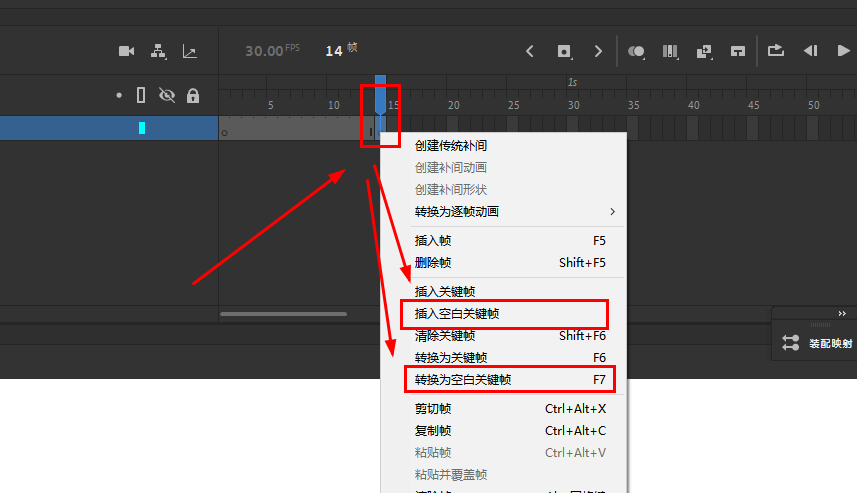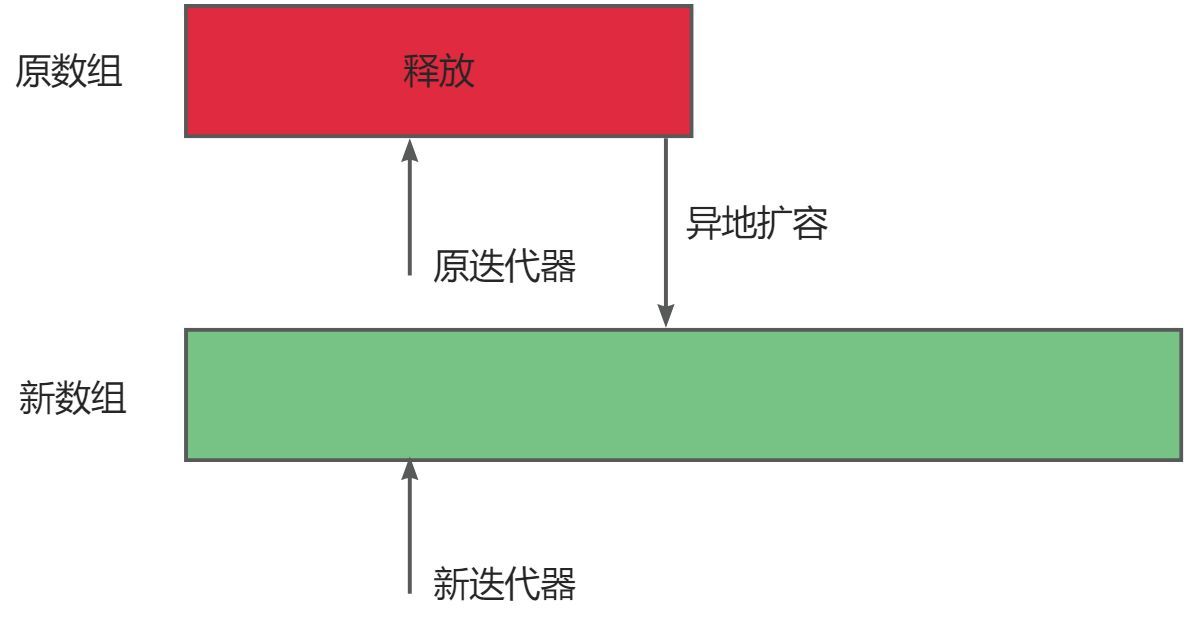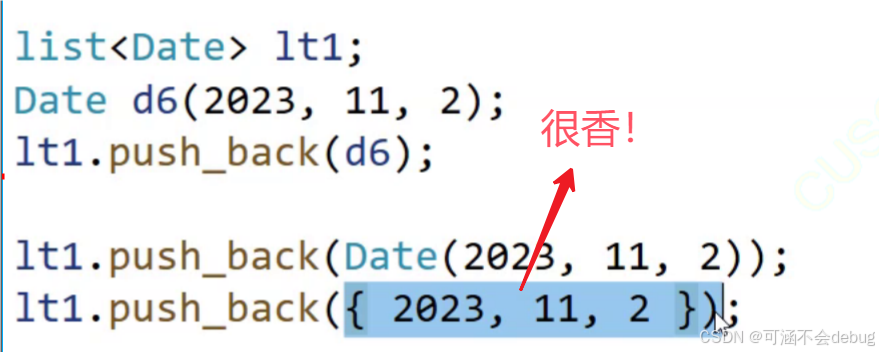目录
为什么要有string类?
auto和范围for
1. auto
2. 范围for
一. 标准库中string类的简单使用
二. string类的常用接口说明
1. string类对象的常见构造
2. string类对象的容量操作
3. string类对象的访问及遍历操作
4. string类对象的修改与查找操作
插入字符或字符串编辑
字符串替换
字符串的交换
查找的使用
5. string类非成员函数

为什么要有string类?
在C语言中,字符串是以'\0'结尾的一些字符的集合,为了操作方便,C标准库中提供了一些str系列的库函数,但是这些库函数与字符串是分离开的,不太OOP的思想,而且底层空间需要用户自己管理,稍不留神可能还会越界访问。
auto和范围for
C++11的两个小语法
1. auto
- 在早期C/C++中auto的含义是:: 使用auto修饰的变量,是具有自动存储器的局部变量,后来这个不重要了。C++11中,标准委员会变废为宝赋予了 auto全新的含义,即:auto不再是一个存储类型的指示符,而是作为一个新的类型指示符来指示编译器,auto声明的变量必须由编译器在编译时期推导而得。
- 用auto声明指针类型时,用auto和auto*没有任何区别,但用auto声明引用类型时则必须加&
#include<iostream>
#include<string>
using namespace std;
int main()
{int a = 100;auto b = a;auto c = 'c';//auto e;//报错,必须具有初始值设定cout << typeid(a).name() << endl;cout << typeid(b).name() << endl;cout << typeid(c).name() << endl;auto pa1 = &a;auto* pa2 = &a;auto& pa3 = a;//声明引用类型必须加&cout << a << endl;pa3 = 1;cout << typeid(pa1).name() << endl;cout << typeid(pa2).name() << endl;cout << pa3 << " " << a<<endl;return 0;
}- 当在同一行声明多个变量时,这些变量必须是相同的类型,否则编译器将会报错,因为编译器实际只对第一个类型进行推导,然后再用推导出来的类型定义其他变量。
- auto不能作为函数的参数,可以做返回值,但是建议谨慎使用。
- auto不能直接用来声明数组。
如下代码
#include<iostream>
#include<string>
using namespace std;void fun1(auto a)
{return a;
}int main()
{auto a = 10, b = 11.11;auto c = 'x', d = 1.01;auto aa[] = { 1,2,3,4 };return 0;
}报错分别为

↑ 指在同一行第一个类型推导与后不一致
![]()
↑ 此处是指函数参数处
![]()
即auto不能直接声明数组类型
2. 范围for
- 对于一个有范围的集合而言,由程序员来说明循环的范围是多余的,有时候还会容易犯错误。因此C++11中引入了基于范围的for循环。for循环后的括号由冒号" : " 分为两部分:第一部分是范围内用于迭代的变量,第二部分则表示被迭代的范围,自动迭代,自动取数据,自动判断结束
- 范围for可以作用到数组和容器对象上进行遍历。
- 范围for的底层很简单,容器遍历实际就是替换为迭代器,这个从汇编层也可以看到。
#include<iostream>
#include<string>
using namespace std;
int main()
{int arr[] = { 1,2,3,74,6 };for (int i = 0; i < sizeof(arr) / sizeof(int); i++){arr[i] *= 2;}for (int i = 0; i < sizeof(arr) / sizeof(int); i++){cout << arr[i] << " ";}cout << endl;for (auto v : arr){v *= 2;}for (auto v : arr){cout << v << " ";}cout << endl;string s1 = "hello world";for (auto s : s1){cout << s << " ";}cout << endl;return 0;
}
我们发现遍历时并没有改变arr数组的值
我们只需将
for (auto v : arr){v *= 2;}改为
for (auto& v : arr){v *= 2;}即可
而auto也不是一定的,只要我们知道要遍历的数组或容器对象的类型指定即可
如下代码
#include<iostream>
#include<string>
using namespace std;
int main()
{int arr[] = { 1,2,3,74,6 };for (int& v : arr){v *= 2;}for (int v : arr){cout << v << " ";}cout << endl;string s1 = "hello world";for (char s : s1){cout << s << " ";}cout << endl;return 0;
}
一. 标准库中string类的简单使用
在使用string类时,必须包含#include<string>头文件,由于string属于std标准库,所以通过域作用限定符可以使用string
#include<iostream>
#include<string>
int main()
{std::string ss1("56565");std::string ss2("12123");std::cout << ss1 << std::endl;std::cout << ss1 << std::endl;return 0;
}也可以通过using 将其展开,然后使用
#include<iostream>
#include<string>
//using namespace std;
using std::cout;
using std::string;
using std::endl;
using std::cin;
int main()
{string ss1("56565");string ss2("12123");cout << ss1 << endl;cout << ss2 << endl;return 0;
}二. string类的常用接口说明
1. string类对象的常见构造
| 函数名称 | 功能说明 |
| string() | 构造空的string类对象,即空字符串 |
| string(const char* s) | 用s指向的字符序列(C字符串)构造string类对象 |
| string(size_t n,char c) | string类对象中包含n个字符c |
| string(const string& s) | 拷贝构造函数 |
如下代码所示
#include<iostream>
#include<string>
using namespace std;int main()
{//string s1();//不可以这样写string s2;//构造空的string类对象s2cout << s2 << endl;string s3("hello world");//用C格式字符串构造string类对象s3cout << s3 << endl;string s4(11, 'x');//string类对象包含11个x字符cout << s4 << endl;string s5(s3);//拷贝构造s5cout << s5 << endl;return 0;
}2. string类对象的容量操作
| 函数名称 | 功能说明 | 函数声明 |
| size | 返回字符串有效字符长度 | size_t size() const noexcept; |
| length | 返回字符串有效字符长度 | size_t length() const noexcept; |
| capacity | 返回空间总大小 | size_t capacity() const noexcept; |
| empty | 检测字符串是否为空串,是返回true,否则返回false | bool empty() const noexcept; |
| clear | 清空有效字符 | void clear() noexcept; |
| reserve | 为字符串预留空间 | void reserve (size_t n = 0); |
| resize | 将有效字符的个数改成n个,多出的空间用字符c填充 | void resize (size_t n); void resize (size_t n, char c); |
size()与length() 方法底层实现原理完全相同,引入size()的原因是为了与其他容器的接口保持一致(比如非线性结构二叉树的length肯定不是全部节点的个数),一般情况下基本都是用size()。
#include<iostream>
#include<string>
using namespace std;int main()
{string s2;cout << s2.size() << " " << s2.length() << endl;string s3("hello world");cout << s3.size() << " " << s3.length() << endl;string s4(13, 'x');cout << s4.size() << " " << s4.length() << endl;return 0;
}
clear()只是将string中有效字符清空,不改变底层空间大小。
如以下代码
#include<iostream>
#include<string>
using namespace std;int main()
{string s4(13, 'x');cout << "字符串为:" << s4 << "\n容量为" << s4.capacity() << endl;s4.clear();if(s4.empty())cout << "字符串为:" << s4 << "\n容量为" << s4.capacity() << endl;return 0;
}
其结果为

resize(size_t n)与resize(size_t n,char c)都是将字符串中有效字符个数改到n个,不同的是当字符个数增多时:resize(size_t n) 用 0 来填充多出的元素空间,resize(size_t n,char c)用字符c来填充多出的元素空间。注意: resize在改变元素个数时,如果是将元素个数增多,可能会改变底层容量的大小,如果是将元素个数减少,底层空间总大小不变。
代码如下
#include<iostream>
#include<string>
using namespace std;int main()
{string s1(13, 'x');string s2 (s1);string s3 (s1);s2.resize(5);s3.resize(5, '$');cout << "字符串为:" << s2 << "\n容量为" << s2.capacity() << endl;cout << "字符串为:" << s3 << "\n容量为" << s3.capacity() << endl;s2.resize(10);s3.resize(10, '$');cout << "字符串为:" << s2 << "\n容量为" << s2.capacity() << endl;cout << "字符串为:" << s3 << "\n容量为" << s3.capacity() << endl;s2.resize(16);s3.resize(16, '@');cout << "字符串为:" << s2 << "\n容量为" << s2.capacity() << endl;cout << "字符串为:" << s3 << "\n容量为" << s3.capacity() << endl;return 0;
}

reserve(size_t res_arg=0):为string预留空间,不改变有效元素个数,当reserve的参数小于string的底层空间总大小时,reserve不会改变容量大小。
代码如下
#include<iostream>
#include<string>
using namespace std;int main()
{string s1("111");cout << "字符串为:" << s1 << "\n容量为" << s1.capacity() << endl;s1.reserve(18);cout << "字符串为:" << s1 << "\n容量为" << s1.capacity() << endl;s1.reserve(1);cout << "字符串为:" << s1 << "\n容量为" << s1.capacity() << endl;return 0;
}
结果为

3. string类对象的访问及遍历操作
| 函数名称 | 功能说明 | 函数声明 |
| operator[] | 返回pos位置的字符,const string类对象调用 | char& operator[] (size_t pos); const char& operator[] (size_t pos) const; |
| begin与end | begin获取一个字符的迭代器 end获取最后一个字符的下一个位置的迭代器 | iterator begin() noexcept; const_iterator begin() const noexcept; iterator end() noexcept; const_iterator end() const noexcept; |
| rbegin与rend | rbegin返回一个指向容器最后一个元素的反向迭代器 rend返回一个反向迭代器,指向容器中第一个元素之前的位置 | reverse_iterator rbegin() noexcept; const_reverse_iterator rbegin() const noexcept; reverse_iterator rend() noexcept; const_reverse_iterator rend() const noexcept; |
| 范围for | C++11支持的更简洁的新遍历方式 |
代码如下
#include<iostream>
#include<string>
using namespace std;int main()
{string s1("135616549");for (int i = 0; i < s1.size(); i++)cout << s1[i];cout << endl;string::iterator i = s1.begin();for (; i != s1.end(); i++)cout << *i;cout << endl;string::reverse_iterator i1= s1.rbegin();for (; i1 != s1.rend();i1++)cout << *i1;cout << endl;return 0;
}
范围for此处就不做演示了,上文有
4. string类对象的修改与查找操作
| 函数名称 | 功能说明 | 函数声明 |
| push_back | 在字符串后尾插字符c | void push_back (char c); |
| append | 在字符串后追加一个字符串 | 接口过多详见表格下图 |
| operator+= | 在字符串后追加字符串str | |
| insert | 在指定位置追加字符或字符串 | |
| assign | 使用指定字符串替换原字符串 | |
| replace | 使用字符串替换原字符串指定区间 | |
| erase | 删除字符串指定的部分 | |
| c_str | 返回C格式字符串 | const char* c_str() const noexcept; |
| swap | 交换两个字符串 | void swap (string& str); |
| find | 从字符串pos位置开始往后找字符c,找到返回该字符在字符串中的位置 | |
| rfind | 从字符串pos位置开始往前找字符c,找到返回该字符在字符串中的位置 | |
| npos(不是函数) | 静态成员常数值,size_t类型的最大可能值,find与rfind没找到返回npos | static const size_t npos = -1; |
| substr | 在str中从pos位置开始,截取n个字符,然后将其返回 | string substr (size_t pos = 0, size_t len = npos) const; |
插入字符或字符串



接口过多在使用时可以查阅文档使用
在string尾部追加字符时s.push_back(c) 与 s.append(1, c) 与 s += 'c'三种的实现方式差 不多,一般情况下string类的+=操作用的比较多,+=操作不仅可以连接单个字符,还可 以连接字符串。
如下代码所示
#include<iostream>
#include<string>
using namespace std;int main()
{string s1("135616549");string s2(s1);string s3(s1);string s4(s1);string s5(s1);s2.push_back('x');s3.append("x");s4 += 'x';s5.insert(9,"x");cout << s2 << endl;cout << s3 << endl;cout << s4 << endl;cout << s5 << endl;s4 += "cccc";cout << s4 << endl;return 0;
}对string操作时,若可以提前知道放多少字符,可以先通过reserve把空间预留好
字符串替换


演示代码如下
#include<iostream>
#include<string>
using namespace std;int main()
{string s1("@123456@");string s2("555555555");string s3(s1);cout << s1 << endl;s1.assign(s2);cout << s1 << endl;s1.assign("666666665");cout << s1 << endl;s1.replace(1, 5, s3);cout << s1 << endl;return 0;
}输出结果如下

字符串的交换
string::swap通常直接交换两个string对象的内部数据(如字符数组指针和长度信息),而不需要复制字符数据。这使得交换非常高效。在C++98中优于全局swap(而在C++11中,全局的swap检测到是两个string交换也会调用string的swap)
#include<iostream>
#include<string>
using namespace std;int main()
{string s1("@123456@");string s2("55555555");cout << "字符串为: " << s1 << endl;cout << "字符串为: " << s2 << endl;cout << endl;s1.swap(s2);cout << endl;cout << "字符串为: " << s1 << endl;cout << "字符串为: " << s2 << endl;cout << endl;swap(s1, s2);cout << endl;cout << "字符串为: " << s1 << endl;cout << "字符串为: " << s2 << endl;return 0;
}查找的使用
可以与多种需要坐标定位的函数联合使用


#include<iostream>
#include<string>
using namespace std;int main()
{string s1("@123456@");size_t pos1=s1.find('@');size_t pos2 = s1.rfind('@');for (int i = pos1; i < s1.size(); i++)cout << s1[i];cout << endl;for (int i = pos2; i < s1.size(); i++)cout << s1[i];cout << endl;size_t pos3 = s1.find('@', 3);for (int i = pos3; i < s1.size(); i++)cout << s1[i];cout << endl;size_t pos4 = s1.find('&');size_t pos5 = s1.rfind('&');cout << pos4 << " " << pos5 << " " << string::npos << endl;//与substr的联合使用size_t pos = s1.find('4');cout << s1.substr(pos, 3) << endl;//与insert的联合使用s1.insert(pos, "xxxx");cout << s1 << endl;return 0;
}
5. string类非成员函数
| 函数 | 功能 |
| operator+ | 链接字符串返回一个新构造的字符串对象(尽量少用) ,因为传值返回导致深拷贝效率低 |
| getline | 获取一行字符串 |
| operator>> | 输入运算符重载 |
| operator<< | 输出运算符重载 |
| relational operators | 大小比较 |
我们这里只介绍getline
代码:
#include<iostream>
#include<string>
using namespace std;int main()
{string s1;string s2;cin >> s1;cout << s1<<endl;getline(cin, s2);cout << s2<<endl;string s3;//遇到'&'才会结束getline(cin, s3, '&');cout << s3 << endl;return 0;
}结果为

getline与流插入都是读取字符串,但是流插入遇见空格就停止,并且不把空格读进去而getline会遇见空格不会停止,由上面我们的第一个输入
hello hello first
可得:流插入读取到第一个空格就结束了,第一个空格被getline读进去了(从输出也可以看出来)
普通getline遇见回车结束,我们可以指定遇见什么结束
这篇文章就到这里啦~喜欢的可以点一下赞
(๑′ᴗ‵๑)I Lᵒᵛᵉᵧₒᵤ❤



















